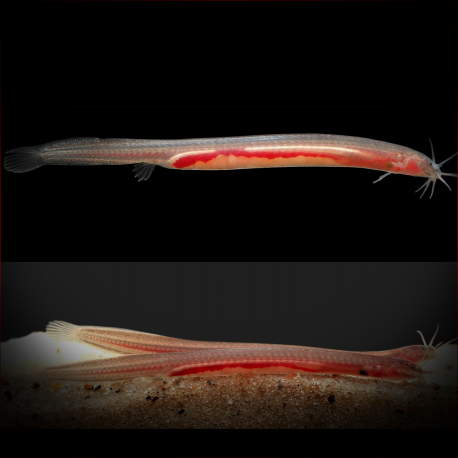More info
Datasheet
| Minimum Tank Size | 40 litres / 10.57 US gallons |
| Maximum Size | 5.0cm / 1.97inches |
| Temperature | 21°C / 69.80°F - 26°C / 78.80°F |
| Hardness | 0.00dgH / 0ppm - 8.01dgH / 143ppm |
| pH | 5.0-7.0 |
Behaviour:
Pangio spp. exhibit peaceful behavior towards both their kind and other fish species, displaying no aggression towards tankmates; however, they may consume eggs or fry if available. They tend to gather in large groups in their natural habitat and will cluster together in confined spaces when at rest in captivity, necessitating a minimum group size of 5-6 individuals. Suitable tankmates include small, peaceful species like Boraras, Sundadanio, and smaller Rasbora, while certain sand-dwelling loaches from the Nemacheilidae family can also coexist but require thorough research due to potential aggressiveness or territorial behavior.
Feeding and Diet:
Pangio spp. are micropredators that feed by sifting mouthfuls of substrate through their mouth and gills, extracting insect larvae, small crustaceans, and organic detritus. In captivity, they accept sinking dried foods but should be regularly offered live and frozen foods such as Daphnia, Artemia, bloodworm, and micro worms to meet their dietary requirements.
Reproduction & Dimorphism:
There is currently no recorded information on the reproduction of Pangio Filinaris. Sexual dimorphism exists in adult specimens, where females are typically heavier and slightly larger than males. Mature males exhibit a branched and thickened first pectoral-fin ray.
Habitat and Distribution:
Pangio Filinaris is indigenous to Pahang and Terengganu states in Peninsular Malaysia, with its specific habitat resembling that of other Pangio species. These loaches primarily inhabit shallow, slow-moving forest streams, swamps, oxbows, and backwaters, often associated with peat swamps and blackwater environments. They prefer shaded areas with minimal dissolved minerals, low pH levels, and substrates composed of peat, mud, or sand typically covered in leaf litter.
Aquarium Setup:
For Pangio Filinaris, a soft, sandy substrate is essential as they enjoy digging and may burrow extensively. Coarser gravel can induce stress or injury and hinder feeding behavior. Driftwood, branches, and dried leaf litter can be added to create shaded areas and mimic their natural habitat. Dim lighting is favored, along with aquatic plants like Microsorum, Taxiphyllum, and Cryptocoryne spp. Gentle filtration with minimal surface agitation is recommended, while precautions should be taken to prevent small individuals from entering filter intakes, as these loaches may jump, especially during acclimatization.

